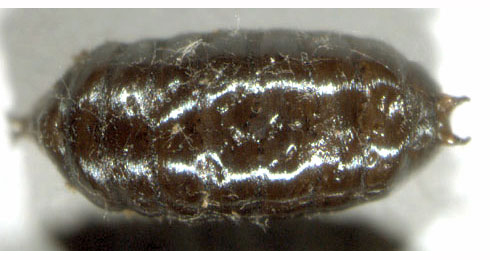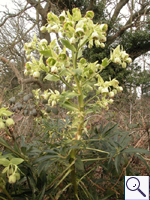|
||||||
|
HELLEBORUS. Hellebores. [Ranunculaceae] |
|
|
Six species of Helleborus are recorded in Britain. These include the native Stinking Hellebore (Helleborus foetidus) and Green Hellebore (Helleborus viridis). Only one British miner is recorded on Helleborus in Britain. A key to the European miners recorded on Helleborus is provided in Bladmineerders van Europa. |
|
Key for the identification of the known mines of British |
1 > Leaf-miner: May be several mines to a leaf, which are initially blackish, short and linear. A blotch is later formed. Pupation external, normally on lower surface (Spencer, 1976: 427). The mine begins as a narrow, sometime stellate, strikingly dark corridor that slowly widens into an upper-surface blotch. Frass in pearl strings. Pupation within the mine, in a lower-surface puparial chamber; the anterior spiracula penetrate the epidemis (Hering, 1957; Spencer, 1976a; Stubbs, 2000a; Welch, 2000a). (Stubbs [2000a] describes the puparial chamber as upper-surface). May be several mines to a leaf, which are initially blackish (as shown), short and linear. A blotch is later formed. |
 Phytomyza hellebori puparium Image: © Willem Ellis (Bladmineerders van Europa) |
|
Phytomyza hellebori Kaltenbach, 1872 [Diptera: Agromyzidae]. |
| Last updated 05-Jul-2019 Brian Pitkin | ||

